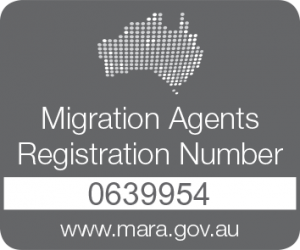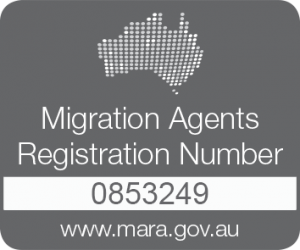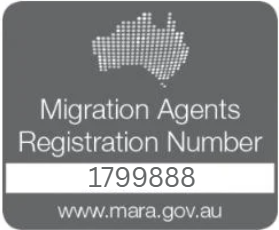Applying for an Australian Parent Visa
Applying for an Australian Parent Visa
Are you missing your children?
Grandchildren?
Sons/Daughters-in-law? (Perhaps not, but let’s move on).
Have the individuals you’ve given life to, toddled off to Australia, gained their citizenship/permanent residence and forgotten to invite you to the party?
Never fear, Australia has temporary and permanent solutions to bridging the gap between you and your offspring.
There are predominantly three permanent Parent visas that could be applied for:
- Onshore Aged Parent (Subclass 804) visa;
- Onshore Contributory Aged Parent (Subclass 864) visa; or
- Offshore Contributory Parent (Subclass 143) visa.
There is also an offshore Non-Contributory parent visa option, but as it is a 30-year processing time, there’s next to no point applying for it as you will be required to wait overseas during this processing time – which makes this visa pretty much redundant.
The permanent parent visas are divided into two categories, Contributory and Non-Contributory.
The “Non-Contributory” Aged (Subclass 804) visa has a much lower visa application charge, but a much longer application processing time.
The Contributory (Subclass 143 or 864) visa has a shorter processing time, but a much higher visa application charge (Surprise! They’ll charge you more to process your application sooner – Like we haven’t heard that before – it’s like a Fastpass at Disneyworld only heaps more expensive!).
The number of decisions made on parent visa applications per year is capped. This means only a certain number within any financial year (1 July to 30th June in Australia) are decided. However, a large volume of applications are received each financial year, way, way more than the cap permits, and this is why Parent visas take so long to be processed.
The “Non-Contributory” Aged (Subclass 804) parent visa currently has a 30-year processing time estimate. This is due to many, many parents wanting to join their children in the land of Oz and the cap per financial year being so low.
Fortunately, for some, this visa can be applied for onshore in Australia, providing a bridging visa to applicants which permits them to remain in Australia over the 30-year processing period. However, to apply onshore for the non-contributory aged parent visa (subclass 804), the main applicant must be deemed as “aged”, which means they must be over the age of 65 years and six months old. The one time in life when being “aged” works in your favour – not that we think 65 and 6 months is aged, but let’s go with it, if it means you can apply onshore for this visa.
Unfortunately, due to the 30-year plus processing times of this visa, it is unlikely you will be around to see the processing times out to be granted the permanent visa (but here’s hoping you do make it to the age of 95 years and six months old) but the bridging visa allows you to remain in Australia whilst waiting, so all is not lost.
The Offshore Contributory (Subclass 143) visa on the other hand, has a 34-36 month processing period, but also has an excessive visa application charge. The Onshore Aged Contributory (Subclass 864) has an even shorter processing time, perhaps just over 12 months (but remember you need to be at least 65 years and six months old to apply for the aged parent visas onshore).
Whilst the Non-Contributory Aged subclass 804 visa will cost you around $3,500.00 AUD for the primary applicant, the Contributory parent visas (subclass 864 and subclass 143) will charge you around this and then another $43,600.00 AUD per applicant as a second visa application charge when the Department of Immigration & Border Protection (DIBP) is ready to decide your application.
Remembering this is only for the main visa applicant, if you were wanting to include a partner or any children, any individual over 18 is also subject also to the $43,600.00 AUD charge.
The DIBP’s reasoning (as Governments always have a reason) for charging this massive amount is this. Many parents, when they decide to migrate to Australia, are generally retired.
This means they will have access to a pension, Medicare (equivalent to NHS), the works. These funds are of course provided by Australian taxpayers and this second visa application charge is an attempt to offset the funds paid by the taxpayer throughout the parents’ life here. Whilst you may think that $43,600 per applicant is a high fee to pay to migrate to Australia, the Government this year announced that parents migrating to Australia cost the Australian taxpayer $350,000 per parent. Based on this, the Government are looking to increase the second visa application charge considerably, but there is no confirmation yet, as to when this will be. We, of course, know that parents/grandparents bring so much value with them to Australia, such as free child minding for pre-school children, but the Government just sees the $ figure it costs the tax payer!
The DIBP have introduced a two stage visa process for contributory parents to help them spread the hefty costs – this is the subclass 173/143 (offshore) or subclass 884/864 (onshore for aged parents) – which is a temporary/permanent visa stream.
The temporary visa is applied for first and this is approved for a period of 2 years. Prior to the temporary visa expiring, you then apply for the permanent stage.
The fees are split between the two applications and generally cost about $4,000 more per applicant when lodging the two stage temporary/permanent visas rather than applying immediately for the permanent visa. It means higher fees but more time in which to pay them, which is essential to some parents if they have property to sell for example.
Many parents cannot apply for the Contributory Parent onshore as they are too darn young, subsequently not meeting this criterion. Regrettably, this leaves them waiting outside Australia for 34-36 months whilst their application is processing.
If you are looking to apply for a permanent Parent visa, one of the very first requirements you must consider is whether or not you meet the balance of family test. This means, you must have more or equal eligible children, than ineligible children.
An eligible child is an Australian permanent resident or Citizen who resides in Australia. An ineligible child resides overseas.
If you have one child, who made the awesome decision to move to Australia and obtained their permanent residence, and then another child who lives in Barbados (still cool, but Australia’s splendid – It’s the middle of winter right now and Sydney is currently at 18 degrees), then congratulations! You meet the balance of family test.
However, if that awesome decision-making child has more than one sibling, and that other sibling has decided to live in Argentina – Malo! You no longer meet the Balance of Family.
There are many other variables when applying for these visas, including meeting health, character, your eligible children demonstrating they are settled in Australia, financial bonds and the like.
Financial bonds are only required for the contributory parent visas and this is normally provided by the sponsoring child, although anyone can provide an Assurance of Support. This bond is kept for a ten year period, and costs $10,000 for one applicant and $14,000 for two applicants (i.e mum and dad migrating together). Assurance of supports are not looked after by the Department of Immigration and Border Protection but are processed through The Department of Social Services.
If you’re interested in obtaining a slightly less intense Parent visa, the Australia Government is introducing a Temporary Parent visa later in 2017.
This visa can be applied for, for either a three-year period or a five-year period. Fortunately, you are not required to meet the balance of family test for this visa and there is no bond payable.
Your Australian Citizen/permanent resident child is still required to sponsor you and will need to be approved as a sponsor prior to your application. Stay tuned, further information regarding this avenue will be provided later in the year.
Reuniting families is important to Australia and if you meet the above criteria, you may be eligible for one of Australia’s many Parent visa options.
Please contact our office should you require further information.





